The best graphics card in 2024
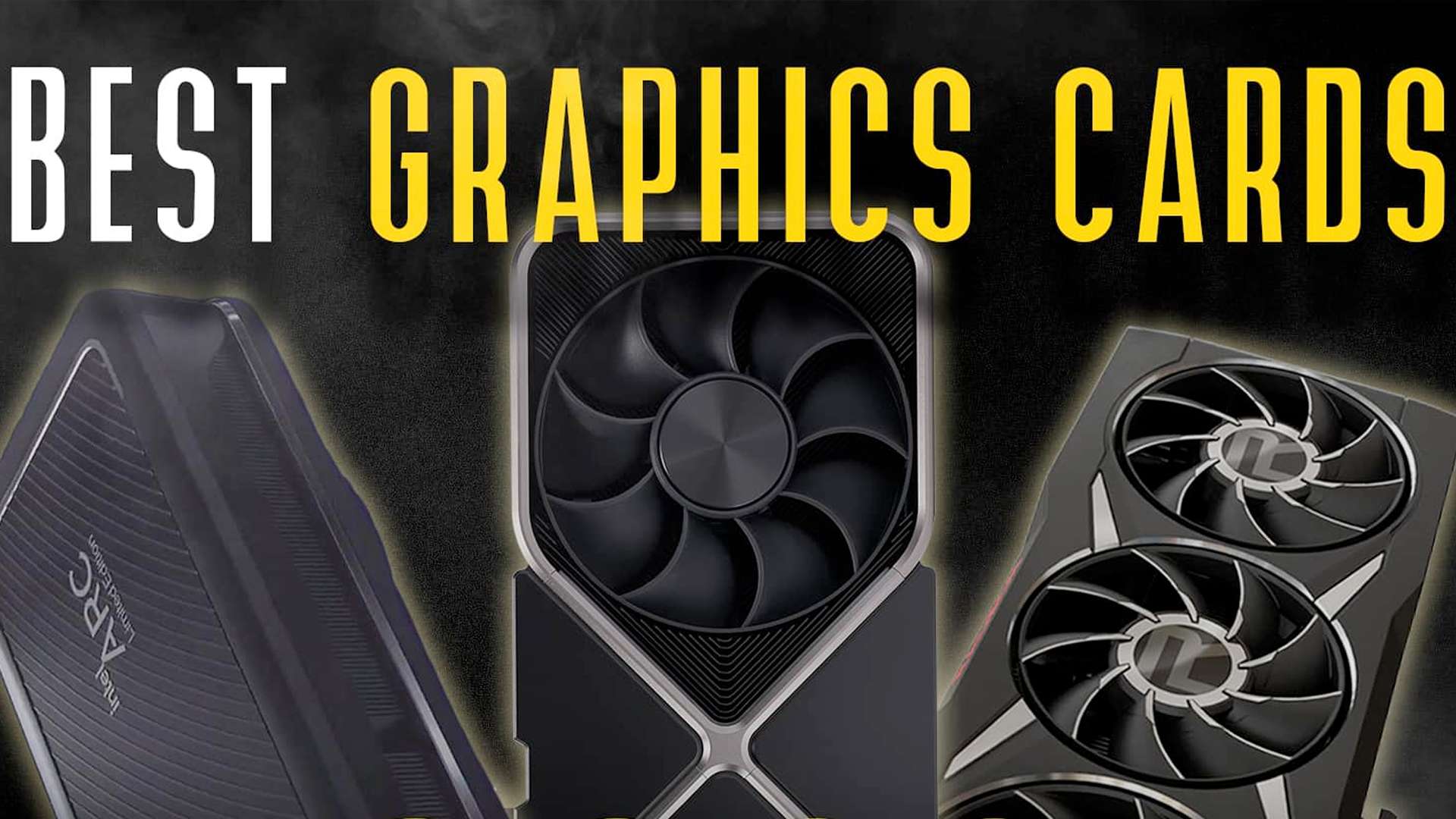
Building or upgrading a PC is not easy, and neither is picking which graphics card you should use. We’ve provided a list of some of the best GPUs to make your life a little easier.
The reality of buying a new graphics card for a PC build can be overwhelming. There seems to be a huge number of baffling letters and numbers, and a higher number doesn’t always mean better. Many PC gaming fans choose to opt out of the entire process and go for a pre-built gaming PC. Even people with a reasonable level of tech knowledge can be thrown off by terminologies such as threads, flops, and CUDA cores.
In many ways, the choice of GPU depends on your budget and requirements, but there are still choices to be made. Do you go with Nvidia or AMD? Is it a good idea to get one of the new Super refresh Nvidia RTX-40 series cards?
Some PC builders might want the absolute best card on the market, and money is not a concern. Others might be looking for something in the mid-range that can offer solid 1440p gaming. Whatever your PC gaming needs, this guide will help you pick the best option for you.
Contents
The best graphics cards
- Nvidia Geforce RTX 4070 Super
- Nvidia Geforce RTX 4060
- AMD Radeon 7800 XT
- Nvidia Geforce RTX 4090
- Nvidia Geforce RTX 3080
GPU FAQs
- Do you need a GPU?
- AMD vs Nvidia
- What is supersampling?: DLSS vs FSR
- What are Founders Edition Nvidia graphics cards?
- Intel Arc – is it going to be worth it?
- What is Ray Tracing?
- Do I need an RTX graphics card for Ray Tracing?
1. Nvidia GeForce RTX 4070 Super
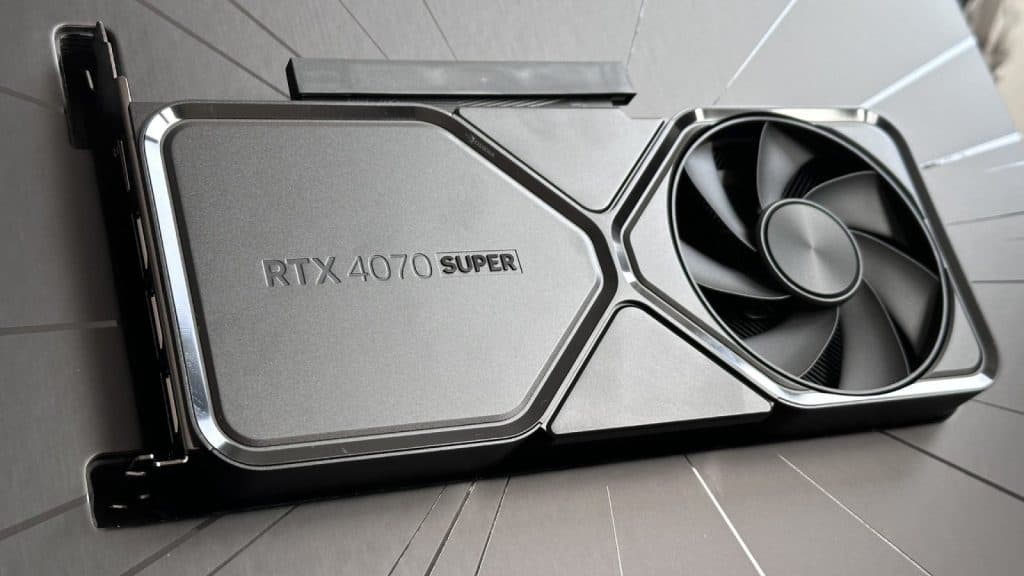 Dexerto
Dexerto | CUDA cores | 7168 |
| Boost clock | 2475 MHz |
| Memory clock | 10500 MHz |
| Memory speed | 21 Gbps |
| Memory | 12GB GDDR6X |
| Memory bus width | 192-bit |
| TGP | 220W |
| Power input | 16-pin |
| Price | $599 |
The RTX 4070 Super is the stand-out release of Nvidia’s 40-Series Super refresh so far. The RTX 4070 Super offers a boost in power thanks to a bigger die on the AD104 chip, as well as a larger L2 cache.
For users who are looking for extremely good performance at 1440p, this card is focused on delivering exactly that. It is overkill for 1080p resolutions, but for users who want the best possible performance at that level for things like esports, the RTX 4070 Super is a fantastic choice.
Gaming at 4K pushes the RTX 4070 Super to the limit, but it can still offer very playable framerates, especially when DLSS 3 is turned on.
The five-star review for the RTX 4070 Super says it all, as the RTX 4070 Super offers the best price-to-performance ratio available on the current market.
2. Nvidia GeForce RTX 4060
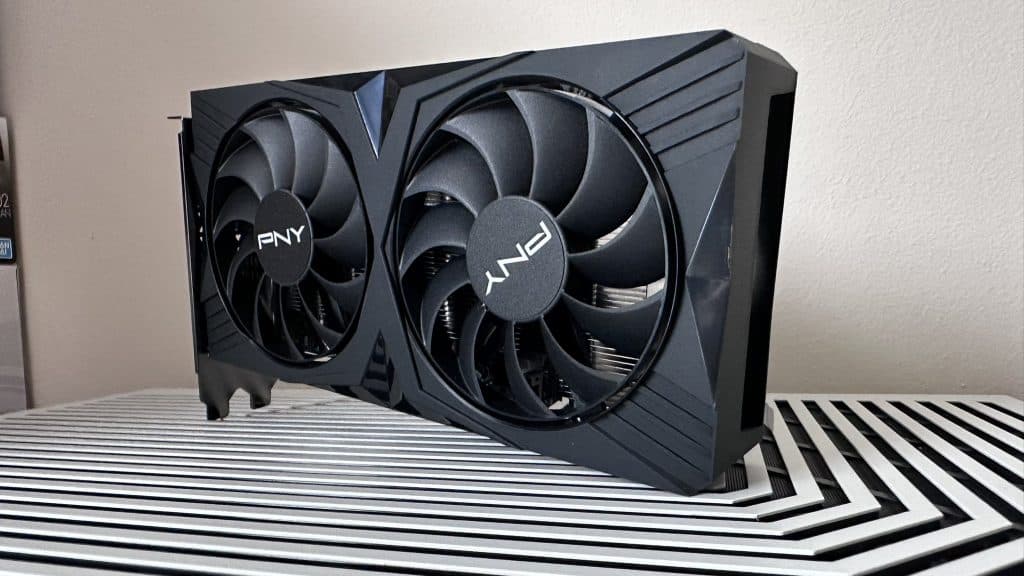 Dexerto
Dexerto | CUDA cores | 5888 |
| Base clock | 1920 MHz |
| Boost clock | 2475 MHz |
| Memory | 12GB GDDR6X |
| TGP | 200W |
| Release date | April 13, 2023 |
| MSRP | $599 |
For those working on a more limited budget, the RTX 4060 is a great choice. Users can still take advantage of all the modern tools offered with the Nvidia 40 series, such as DLSS 3, meaning higher framerates and overall smoother performance on supported games.
Though the RTX 4060 Ti offers a slightly higher performance, the difference is very slight under most workloads, and is not worth the extra price, especially at 1080p.
The RTX 4060 is a very capable card for the modern generation and can take on even very demanding titles like Cyberpunk 2077 with no problem. This combined with its very reasonable price point makes it a good budget option.
3. AMD Radeon 7800 XT
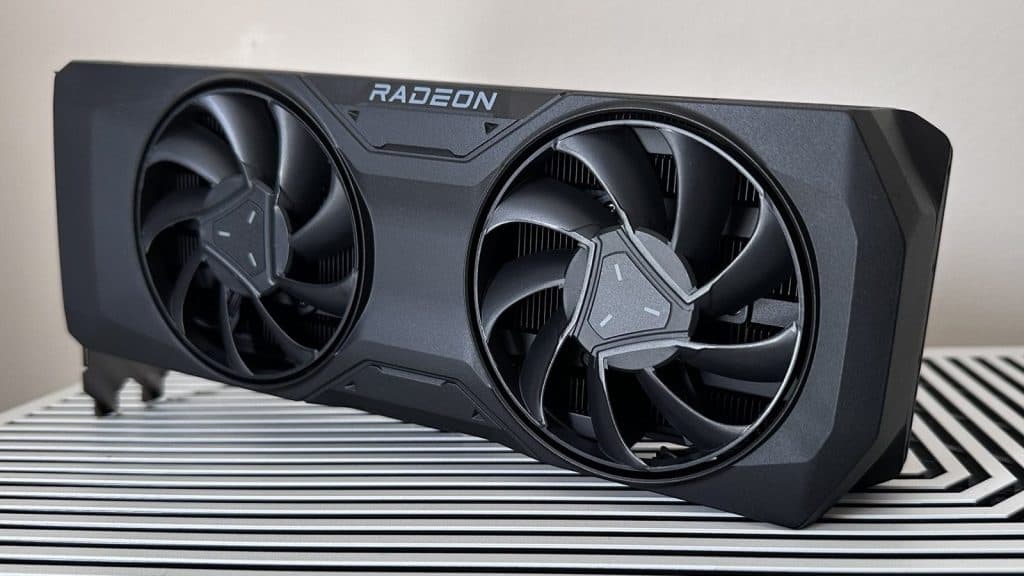 Dexerto
Dexerto | Stream processors | 3840 |
| Compute units | 60 |
| RT accelerators | 60 |
| AI accelerators | 120 |
| Game clock | 2124 MHz |
| Boost clock | 2430 MHz |
| GDDR6 memory | 16GB |
| Memory interface | 256-bit |
| Memory speed | 19.5Gbps |
| AMD infinity cache | 64Mb |
| TGP | 263W |
| Price | $499 |
Billed as the rival to the Nvidia GeForce RTX 4070, the AMD Radeon 7800 XT ended up eating Nvidia’s lunch with a card that offered more VRAM and a cheaper price than its chief rival from Team Green.
In general, FSR 3 does not offer the same level of performance improvement that Nvidia’s DLSS 3 does, but it can still deliver some impressive figures.
For users who are gaming at 1080p, the 7800 XT is a great choice, posting higher framerates than the RTX 4070 in some scenarios and definitively beating out the RTX 4060 at 1440p resolutions. The 7800 XT can also manage some decent figures at 4K, though it does start to struggle under demanding workloads at this level.
4. Nvidia GeForce RTX 4090
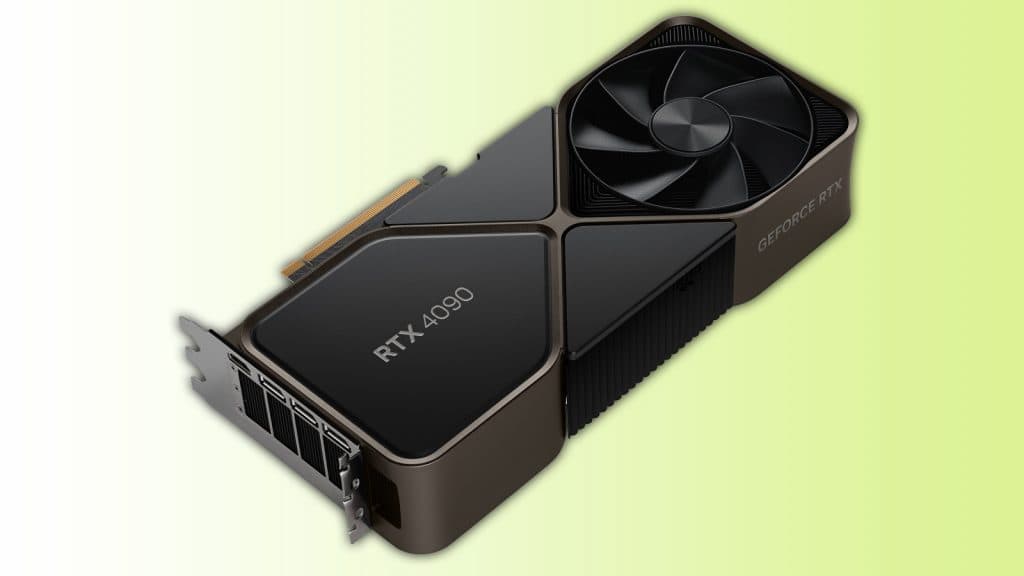
| NVIDIA CUDA® Cores | 16384 |
| Boost Clock (GHz) | 2.52 |
| Base Clock (GHz) | 2.23 |
| Standard Memory Config | 24 GB GDDR6X |
| Memory Interface Width | 384-bit |
| Maximum GPU Temperature (in C) | 90 |
| Graphics Card Power (W) | 450 |
| Required System Power (W) (4) | 850 |
| Maximum Digital Resolution (1) | 7680×4320 |
The Nvidia GeForce RTX 4090 is still the reigning king of fast GPUs. Nothing on the market comes close to offering the kind of performance figures that the RTX 4090 can put out. However, that level of performance comes at a steep cost.
For high-end gaming at 4K, nothing else can come close to the RTX 4090, which can run demanding titles like Control at 4K with Ray Tracing and DLSS turned on, and still output 160fps.
For users who want the best performance possible at 4K and have the budget available then the RTX 4090 is the optimal choice.
5. Nvidia GeForce RTX 3080
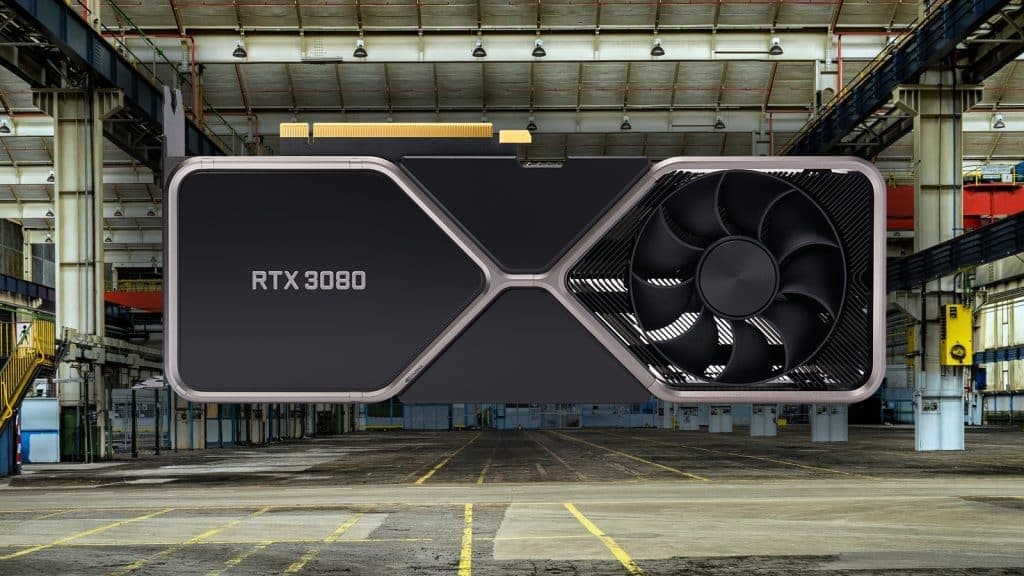 Dexerto
Dexerto| CUDA cores | 8704 |
| Base clock | 1440 MHz |
| Boost clock | 1710 MHz |
| VRAM | 10GB GDDR6x |
| Memory bus width | 320-bit |
| Memory clock speed | 1180 MHz |
| TDP | 320W |
| GPU die | GA102-200 |
| Price | $500 |
The Nvidia Geforce RTX 3080 is something of a dark horse candidate. Though officially discontinued by Nvidia, this GPU can still be found on sites such as eBay for very reasonable prices, often dipping well below $500.
Despite being an older GPU, the RTX 3080 can still post some impressive performance figures, able to handle modern AAA games with few problems, especially at 1080p resolutions. The RTX 3080 was a standout in its generation, offering a brilliant balance of price and performance, and with reduced prices on lightly used models, it is something or a bargain for those who want smooth gaming performance without breaking the bank.
GPU FAQs
Do you need a GPU?
The short answer if you’re reading this page: yes.
The longer answer? It entirely depends on what you’re aiming to do. A dedicated graphics card will almost always improve everything you intend to do. From content creation to gaming, GPUs just take the stress off of your PC’s CPU to allow it to continue with its needed tasks.
However, some branches of the AMD and Intel CPU lines now actually perform great on their own, with the integrated GPU intended for things like office work and maybe light Photoshop.
Chips like the Ryzen 5600G and 5700G from AMD are recommended for those interested in building a budget build, as well as ideal for emulation and retro gaming.
While they won’t pull in impressive framerates, they should be able to see you through some very light 1080p gaming or some hardcore emulation.
AMD vs Nvidia
… and Intel
The AMD vs Nvidia conversation is always going to land on the point of ‘Nvidia is better’ and it’s true. There’s no doubt with everything that Nvidia brings to the table by using one of their GPUs in your laptop or rig, that you’re going to suffer or have to make sacrifices.
Things like Nvidia Broadcast, Omniverse, and the GeForce Experience with its built-in recording function and optimization for your games, as well as the ever-impressive DLSS, mean that Nvidia just outright offers a better deal on the graphics card front.
However, AMD’s cards offer something in that you’re going to wind up spending a lot less than initially expected in some aspects. Lower power consumption means less money spent on a power supply, and AMD is generally a touch cheaper, too.
Some of the recent AMD cards have even been outperforming the Nvidia equivalents, but again, it depends on what you really want from your PC.
What is supersampling?: DLSS vs FSR
Supersampling is the process of shrinking an image down to a lower resolution and then blowing it back up using algorithms from AI or machine learning. You’ll get silky smooth frames on even the toughest game to run on things like a 3050 Ti.
So, supersampling is a relatively new bullet point to discuss in terms of graphics cards. It’s really designed to stop the superseding nature of GPUs, where once the next couple of iterations are out, some graphics cards become, well, worthless.
To counteract this, Nvidia has DLSS – Deep Learning Super Sampling – and AMD has FSR – FidelityFX Super Resolution – both of which accomplish the same task but in different fashions.
The neat thing about FSR is that AMD has made it open source so any game can begin to integrate it. However, Nvidia has closed off DLSS by limiting it to their hardware, and even then, only for RTX cards.
FSR works on all GPUs that it supports, bringing new life into even older GTX cards that have become forgotten. DLSS works on RTX cards, from the 20-series onwards.
However, as mentioned, DLSS and FSR have to be integrated into the game by the developers. Though, as it has gone open source, it appears as though some developers are making programs to ensure it runs everywhere.
What are Founders Edition Nvidia graphics cards?
Founders Edition cards are the graphics cards that are manufactured by Nvidia themselves. They rarely come back in stock and often go for much more on the secondary market due to their complete ‘stock’ design.
These are the complete basis of every card that follows onwards, with all kinds of manufacturers developing their own version of each branch of the card.
Intel Arc – is it worth it?
As of right now, it appears Intel’s first crack at graphics cards isn’t going to live up to their own hype machine. Announced in 2021, Intel positioned itself as the third pillar in the graphic card industry and they kind of fluffed it.
However, Intel Arc shouldn’t be taken entirely as dead on arrival, as presumably, the next iteration will improve things. However, seeing as how much catching up it took AMD to have a remote inning at Nvidia’s prowess after losing all control in the late 2000s and early 2010s, don’t get your hopes up.
What is Ray Tracing?
Ray Tracing is a technology that’s been around for quite some time. It’s a method of calculating light in a 3D environment in a semi-natural way, that doesn’t require programmers and developers to ‘bake’ it in. This includes warping in things like glass, or even changing the color or size as it passes through things.
Whereas it has been used frequently in movies since around 2005, with Monsters University being the first to use it for everything, it wasn’t until the launch of RTX cards that ray tracing even began to function properly in real-time applications like video games.
Prior to things like Doom 3 and advancements in the Unreal Engine, games would have to ‘bake’ their lights. Games like Call of Duty, for instance, would simply have the lighting already built into the world with nothing that could change it.
Games with Ray Tracing now, such as Minecraft’s RTX version, can take a light source and bounce it around mathematically as close to realism as possible. So if you build a house with one block open for a window, the light will pour in and produce a natural light leak.
Do I need an RTX graphics card for Ray Tracing?
No, technically any graphics card supports Ray Tracing.
AMD has its own version of ‘RTX’, which is merely just branding. They just poorly advertise it and do a worse job, but the point is, no, you don’t need an RTX-branded card from Nvidia to do raytracing.
AMD graphics cards do a worse job in part because they utilize the same hardware cores that perform different tasks at the same time. Nvidia changed the name of their GPUs from GTX to RTX because of the switch in focus for the development of the 20 series onwards.
If you click on a product link on this page we may earn a small affiliate commission.



